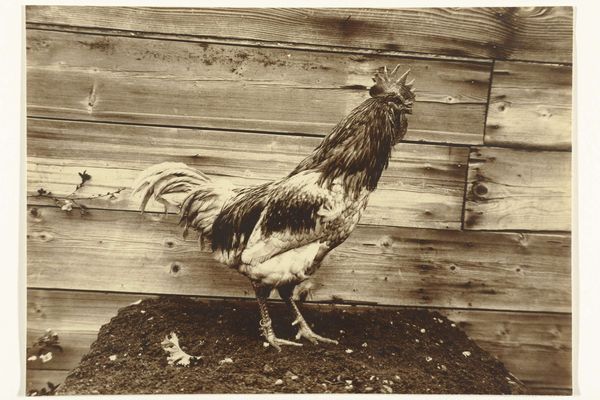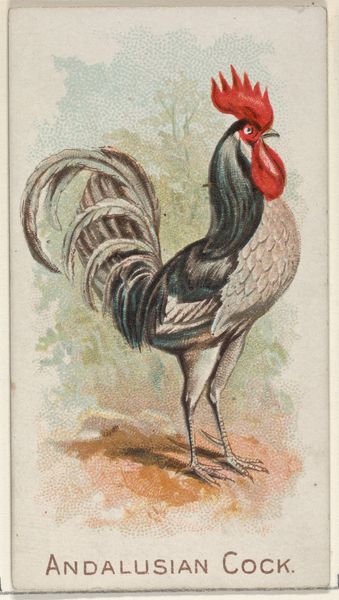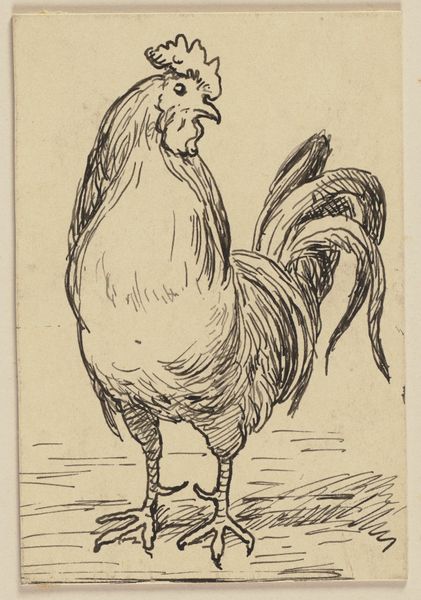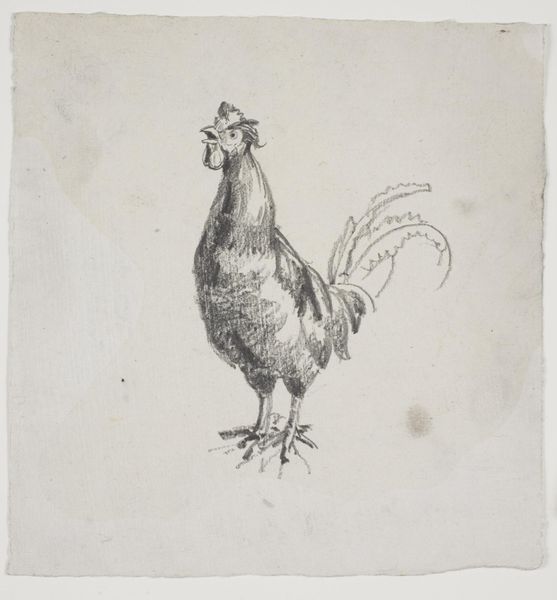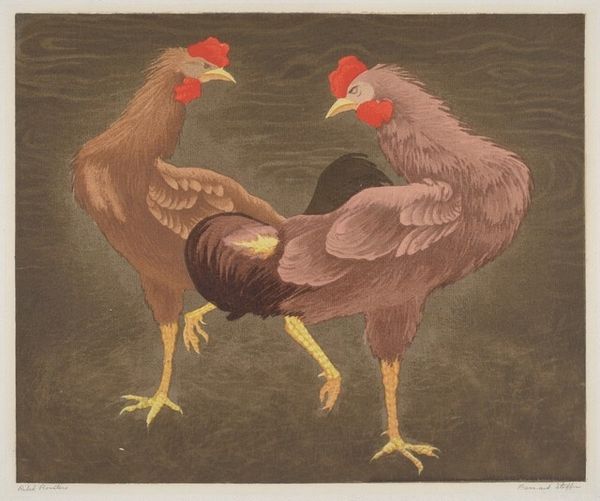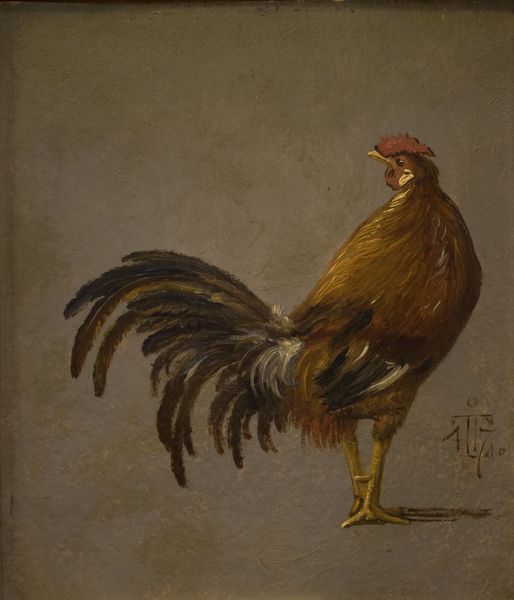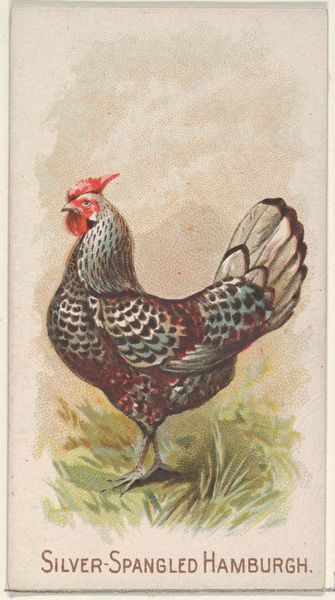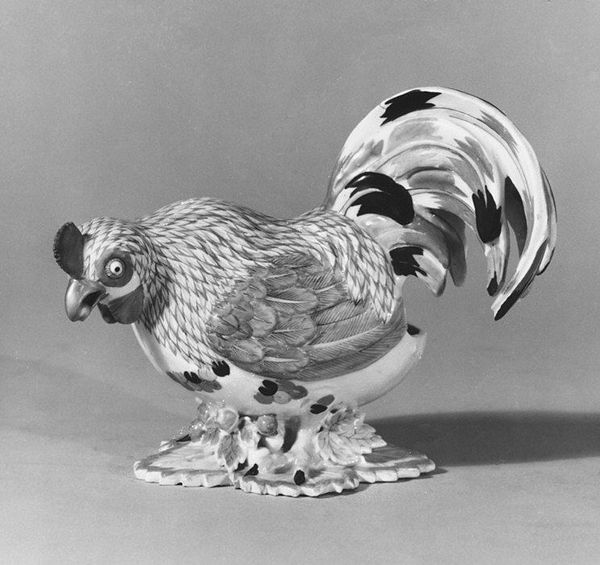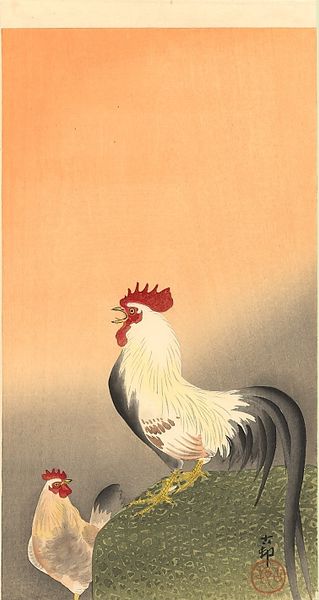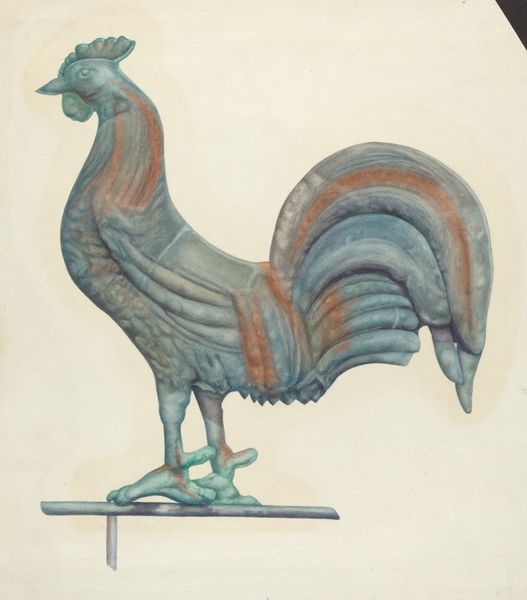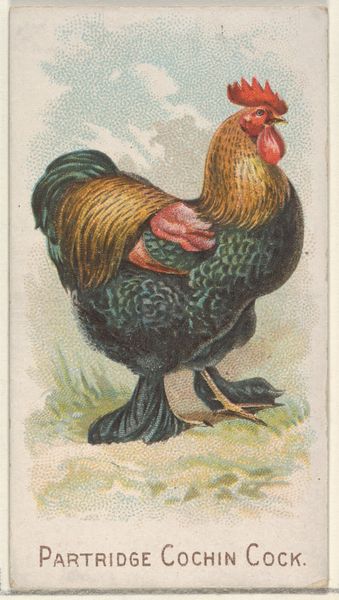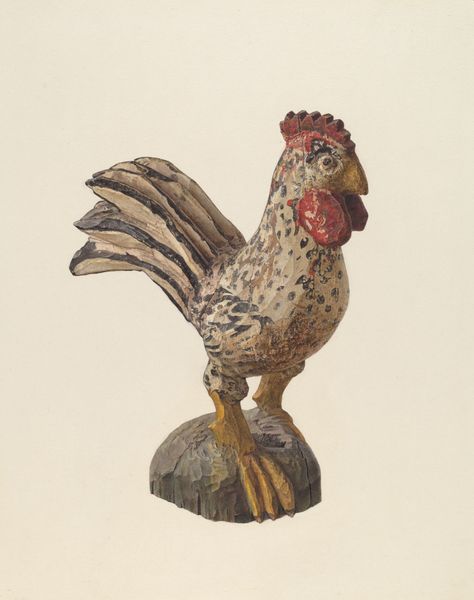
photography
#
portrait
#
pet photography
#
nutrition
#
natural world styling
#
natural shot
#
natural tone
#
natural photography
#
photography
#
appetizing
#
botanical photography
#
food photography
#
animal photography
#
realism
Dimensions: height 222 mm, width 167 mm
Copyright: Rijks Museum: Open Domain
Curator: Here we have Richard Tepe's "Dierstudie van een haan," or "Animal Study of a Rooster," created sometime between 1900 and 1930. It's a striking photographic portrait currently held at the Rijksmuseum. Editor: My immediate impression is that this isn’t just some casual snapshot; it's a formal study. The tones are rich and the rooster's pose… almost regal. There’s a real emphasis on texture here. Curator: Absolutely. Notice the sepia tones – they imbue the image with a sense of history, a link to early photographic processes and aesthetics. I am also curious what symbolic meanings does the artist try to evoke, and why? Editor: That’s interesting given how commonplace photography was even at the time of its making. I can't help but see the social dynamics at play: What does it mean to take such care in depicting an animal meant for labor and consumption? What did it entail to take such photos at the time, from staging the bird, its background to the logistics of producing high quality print? Curator: The rooster itself carries heavy symbolism. Across cultures, it’s associated with virility, courage, and even vigilance – the harbinger of a new dawn. Tepe seems interested in elevating this otherwise mundane farm animal to a figure of dignity. Editor: Which makes the choice of photography even more intriguing. It highlights the democratization of portraiture that photography afforded, previously reserved for the wealthy elite. By photographing a rooster in this way, Tepe not only subverts traditional hierarchies, but also elevates craft of photography in general. I find the focus on production quite powerful in that regard. Curator: I agree, and it brings into sharp focus our modern ideas on cultural continuity – the artist's use of photographic form echoes traditions even as it speaks of new symbolic interpretations. In viewing Tepe’s image, we must ask how it continues the discourse and cultural assumptions around photographic traditions today. Editor: It's funny how looking closely at an old photograph of a rooster can reveal so much about social structures and changes. I was not expecting it. Curator: Indeed. Art often works that way. "Dierstudie van een haan" pushes us to think about cultural symbols, representation and transformation, all captured in the deceptively simple form of animal photography.
Comments
No comments
Be the first to comment and join the conversation on the ultimate creative platform.
